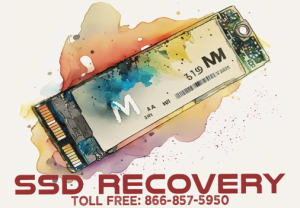2024 Solid State Drive News
eProvided Solid State Drive News provides updates on the latest developments in SSD technology. Updates include new products, performance benchmarks, SSD trends, and how eProvided SSD drive recovery is available right now. For example, recent news may cover the introduction of faster NVMe SSDs with read/write speeds exceeding 3,500 MB/s or advancements in 3D NAND technology.
Our team is always on the hunt for the latest and greatest in new SSD technology. eProvided brings you up-to-date information and groundbreaking news. We’re like the Sherlock Holmes of the SSD world. We will piece together the developments and updates in this field.
Our focus is on SSD technology—developments that increase storage capacities while reducing costs. And what happens if you need to recover files on an SSD? eProvided has you covered on this entire SSD journey. Keep this page bookmarked for new and exciting news about solid state drives. Be the first to uncover the interesting world of solid state drive technology.
PCIe 7.0 is Coming in 2025 with SSDs Reaching Speeds up to 60GB/s
Get ready for a speed revolution with PCIe 7.0! PCIe 7.0 is expected to be released in 2025, enabling the availability of SSDs with speeds of up to 60GB/s in 2025 or 2026. “Supporting devices are not likely to make an appearance until 2026” as reported by Fudzilla’s Nick Farrell: PCIe 7.0 SSD / PCIe 7.0 is on the horizon.
Picture this: it’s 2025. You’re in front of your computer, ready to transfer a 3 terabyte file. You click “send,” and boom, it’s done transferring in seconds. No waiting, and no green progress bars creeping along. Just pure, unadulterated speed. It sounds like a dream. Well, it’s about to become a reality in 2025.
America is on the brink of a solid state-driven technology revolution. Folks, it’s all thanks to the upcoming release of PCIe 7.0. The word on the street is that this bad boy is going to enable SSDs with speeds of up to 60GB/s. Yes, you read that right. 60GB per second! That’s fast! It’s faster than a cheetah chasing after its dinner. So buckle up, SSD technology enthusiasts. The future of SSD data transfer is about to get a whole lot better in 2025, or even sooner. Now, if only we could get our coffee to brew that fast.
Unleashing the Power of PCIe 7.0 in 2025
Imagine a four-lane highway, zipping back and forth at breakneck speeds. This is the world of PCIe 5.0. But what if we told you there exists a single-lane highway that handles the same amount of traffic with the same efficiency? Say hello to the superhighway of SSD data transfers, PCIe 7.0! Crazy right! You might wonder, “How on earth can a single SSD lane handle the traffic of four?” That’s the magic of technological advancements in SSDs. It’s like having a single lane on a highway, and each car has the capability to teleport, avoiding any congestion. It sounds like something straight out of a sci-fi movie. But it’s not just a dreamed-up idea. PCIe 7.0 is coming, and it’s going to change the game of data transfer. So, prepare in advance, folks, because the future of data highways is here. It’s a super-fast single-lane freeway this time!
PCI Express bandwidth increases by a factor of two with each generation. So, PCIe 7.0 will provide a data rate of up to 128 GT/s. This is a significant improvement, as it is eight times faster than PCIe 4.0. It’s four times faster than PCIe 5.0. In short, PCIe 7.0 can achieve a bi-directional throughput of up to 512 GB/s through an x16 connection and 128 GB/s through an x4 connection.
Failed Solid State Drive Recovery.
SSD data loss is quite concerning for most, if not all, users. So, how do you address failed solid state drive recovery? Firstly, is your failure mechanical or logical? Logical errors consist of software issues, outdated firmware, bad blocks, etc. Yet, there are a handful of recovery techniques to carry out SSD recoveries. Ultimately, data recovery from solid state drives is a complicated process. Making sure to update the storage drive’s firmware ensures HDD operations work properly. Solid state disk recovery engineers at eProvided retrieve corrupted, deleted, and missing files.
Solid State Drives New Production & SSD Data Recovery
Samsung expands flash production – eProvided relaunches Solid State Disk Recovery Site in June 2021. Visit Recover-SSD.Com.
[10:03AM MST, Saturday, June 12, 2021] SSD data recovery becomes a reality. As prices drop on NAND flash, many companies know there is room to profit in this sector. SSD production surges. Solid State Drives, lightning fast, and very dynamic devices. These new Solid State Drives can move data at astonishing speeds. Standard hard drives push 100-150 MB/s. New SSD’s function at read speeds of 7000 MB/s and write speeds of 5000 MB/s and up. Take for instance Samsung’s V-NAND SSD 980 PRO: Max Read: up to 7,000 MB/s & Max Write: up to 5,000 MB/s.Samsung 980 Pro
Samsung 980 PRO SSD has a combination of speedy PCIe 4.0 interface, a new controller and flash. This SSD provides for boisterous performance on many types of applications. The 980 PRO offers high-performance bandwidth for heavy-duty gaming, graphics, and more. Not only is it optimized for speed, but it comes in a M.2 2280 form factor that plugs directly into desktops and laptops.It’s safe to say Samsung’s 980 Pro PCIe 4.0 M2 speeds are dynamic. In fact, the 980 Pro writes speeds up to 2700MB/s, and read speeds of up to 6400MB/s. Making this drive perfect for expanding storage of gaming consoles.
Consumers still using PCIe 3.0 motherboards with a M2 2280 slot can still install this SSD. Although, speeds won’t reach its maximum as it does on a 4th Gen, it will maximize the potential of the 3.0 connection. eProvided successfully recovers all SSD form factors. Either your SSD has failed logically or mechanically. But, in most cases, your data isn’t gone forever.
Companies scramble to solve consumer based SSD data recovery solutions. There is a player that has launched a new SSD Hard Drive Recovery website to handle such data losses. Welcome to the mix, eProvided.com Now, with over 2 decades dealing with NAND flash data recovery. These folks are on the ball. As a result, they are aggressively taking on new partners.
Recover SSD Not Detected in Windows
How does one recover data from an SSD not detected in Windows? Disappearing files, corrupted files, and failed SSDs are recoverable. Let’s say one day you go to power on your PC, and you need to locate a file stored on your SSD. Yet, when you search for the drive, nothing appears? What do you do then? A few tips are that you can check to see if you’re operating on the most recent version of the BIOS system.
In the event, after unplugging all other drives, and updating the BIOS, does it work? Are your files retrieved? Most try and aren’t successful, so don’t give up hope just yet. eProvided SSD data recovery engineers has the tools and expertise to help. There are a few reasons why an M2 SSD not detected on Windows. One is because of BIOS issues, as we mentioned before. Another cause is Disk Management problem, troubleshooting your hard drive could help. If files are missing from your solid state drive, speak to one of our live SSD data recovery engineers today.
Solid State Disk Recovery: eProvided.Com
 Are you a small data recovery company or SSD manufacturer? Are you looking to have another company manage your data loss problems? eProvided’s Recover-SSD site is your solid state disk recovery and broken flash drives lifesaver. With that said, eProvided’s new SSD data recovery website re-launched in 2021. Thank you! M.2 SSD drives fail often. Thus, Recover-SSD is now available to solve SSD repair issues. Fix an SSD or get your data back!
Are you a small data recovery company or SSD manufacturer? Are you looking to have another company manage your data loss problems? eProvided’s Recover-SSD site is your solid state disk recovery and broken flash drives lifesaver. With that said, eProvided’s new SSD data recovery website re-launched in 2021. Thank you! M.2 SSD drives fail often. Thus, Recover-SSD is now available to solve SSD repair issues. Fix an SSD or get your data back!Consequently, Toshiba is building many more NAND Flash facilities. Thus, officials had not completely confirmed the entire plans for this facility.
“NAND memory is a cornerstone of smartphones and tablets. Thus, it gained extra importance as solid-state drives have taken hold. MacBook Air, that it spawned, is gaining huge acceptance. Similarly, it is not as large as Samsung in the field. Toshiba is an additional source for many major companies, sometimes including Apple.”
Toshiba is considered the most aggressive in pushing NAND Flash technology and is planning 19-nanometer manufacturing that could easily lead to mass production of the single-chip 128 GB memory, useful in super tight spaces on smartphones, iPhones, iPads and future iHome products. SSD drive recovery is possible!
News Source for Original Story: https://press.trendforce.com/press/20180103-3041.html
